Introduction:
The undeniable power of the Sea is undeniable, and no civilization or pantheon of gods is without a deity devoted to the ever-changing ocean and its inhabitants. Greek mythology is no exception, with several important gods devoted to sea and ocean themes. From Poseidon to Triton and all manner of sea monsters, here we will explore some of the Greek gods and goddesses related to sea and ocean subjects.
Point 1: Poseidon, God of the Sea
1.Overview: Poseidon is the Olympian Greek god of the Sea. He is the son of Cronos and Rhea, brother of the Olympian pantheon of gods, and is the elemental embodiment of the sea and all its miracles and powers. Throughout history, Poseidon has been depicted as a powerful and fearsome god, who could call upon violent storms and raging waves to crash down upon his enemies.
2. Attributes and Symbolism: Poseidon is typically depicted in his chariot, which is drawn by giant horses, or sometimes a hippocampus, a mythical creature that is half horse, and half fish. He is usually seen carrying a trident, long associated with his power and dominion over the sea, as well as a dolphin, which often served as his loyal steed. He also wore a crown of seaweed and holds a net in his hand, symbolizing his power to catch and contain the wildest of sea creatures.
3.Importance and Significance: Poseidon was one of the most important and influential gods in the Greek pantheon and was an important figure in many stories. Tales of his wrath and strength were well-known, particularly in stories of his rivalry with the god Zeus. He is also known as the father of Cyclops and the creator of the horse. Poseidon is a true representation of the power of the sea, and his influence continues to be felt today in stories and myths.
Point 2: Amphitrite, Poseidon’s Wife
1.Overview: Amphitrite was the wife of Poseidon and a goddess associated with the sea. She was the daughter of Nereus and Doris, and a goddess of the deep sea. She is usually depicted riding on the back of a dolphin. She was said to be an incredibly beautiful creature of the sea, living in an underwater palace in the depths of the ocean.
2. Attributes and Symbolism: Amphitrite was an important part of many Greek stories and was a powerful goddess in her own right. She was said to be able to calm the waves and still the seas with her mere presence, lending a tranquil air to her surroundings. Additionally, she was usually depicted with a diadem or crown of stars, signifying her importance in the heavens. Her symbol of the dolphin is also said to represent the friendship and loyalty between man and sea.
3.Importance and Significance: Amphitrite’s importance lies in her power to embody both the calmness of the peaceful seas and the strength of the raging oceans. To many, she is seen as a symbol of hope and faith in the power of the seas. She was a beloved part of Greek mythology and continues to be a source of strength and inspiration in modern literature and culture.
Point 3: Triton, King of the Sea
1.Overview: Triton was the son of Poseidon and Amphitrite, and the king of the sea. He was known for his great strength and power, and was able to command the waves with a single clap of his hands. He is usually depicted carrying a trident and riding a great sea creature, such as a sea serpent or hippocamp, and is usually seen surrounded by all manner of sea creatures, such as whales, dolphins, and mermaids.
2. Attributes and Symbolism: Triton was said to be a powerful We are all children of the sea and its creatures. Triton was seen as a wise and generous ruler of the depths, and often sought to protect them with his strength. He was also seen as a symbol of the sea’s power over all other creatures, and his trident and sea creature often symbolized his control over the waves.
3.Importance and Significance: Triton is an essential figure in Greek mythology, and is seen as a powerful symbol of the sea’s strength. He is an important part of the Greek pantheon, and his power and influence can still be seen in the stories and myths of the modern world.
Point 4: Nereus, God of the Sea
1.Overview: Nereus was a lesser-known god of the sea, but one no less important than Poseidon. He was the oldest known sea god and father of Amphitrite. He was said to be a wise and kindly god who could answer questions about the sea’s depths.
2. Attributes and Symbolism: Nereus was usually depicted as a wise old man with a long beard, and could often be found surrounded by dolphins, mermaids, and other creatures of the sea. He was also seen as a symbol of knowledge and wisdom, and his stories often revolved around his ability to answer questions about the mysteries of the deep. Additionally, his age and wisdom were often used as symbols of the timeless mysteries of the sea.
3.Importance and Significance: Nereus’ importance lies in his role as a source of wisdom and knowledge about the sea. He was seen as a kindly figure, helping to guide sailors through storms and navigating dangerous waters. His knowledge of the sea was so great that it was even said that he could answer any question posed to him about the depths. He was an important part of Greek mythology, and his influence can still be felt today in stories and myths.
Point 5: Glaucus and Thetis, Combination of Sea and Land
1.Overview: Glaucus and Thetis were important gods in Greek mythology, with their combination of Sea and Land in one. Glaucus was a sea god, while Thetis was a goddess of land, but together they were able to bridge the divide between the two realms and bring peace and harmony. They often represented the bond between sea and land and were seen as symbols of unity.
2. Attributes and Symbolism: Glaucus and Thetis were usually depicted as a pair, hand in hand, as symbols of the peace and harmony between sea and land. It is said that their union was a symbol of the cosmic order and unity between two powerful forces. They were often a source of great strength and perseverance, especially during times of trouble or strife.
3.Importance and Significance: Glaucus and Thetis are important figures in Greek mythology, representing the power of the sea and land together. Their combination of power and unity was seen as a great source of strength, and their stories serve as an example of the importance of coming together during difficult times. Their influence can still be felt in stories and cultures today.
Point 6: Sea Monsters and Nymphs
1.Overview: The Greek pantheon also included many fearsome sea creatures and nymphs, such as the Sirens, the Gorgons, the Cyclops, and many others. These creatures symbolized the power and mystery of the ocean depths, and their presence in the stories often served as a reminder of the dangers that lurked beneath the waves.
2. Attributes and Symbolism: These creatures were seen as embodiments of the power of the sea, and were often pitted against the gods themselves. They were said to guard the entrance to the underworld, and were seen as a symbol of mankind’s fear of the unknown. Additionally, they were believed to be sources of great power, and often times a hero’s courage was tested when they faced these creatures alone.
3.Importance and Significance: These creatures and nymphs were an important part of Greek mythology, and their presence in the stories served as a reminder of the power that the ocean held. They are still seen as a source of strength and courage, and their influence can still be felt in modern stories and culture.
Conclusion
Sea and ocean themes are a common motif throughout Greek mythology, with Poseidon, Amphitrite, and Triton at the forefront of many epic tales. But beyond the main gods, there are also many lesser-known sea gods, creatures, and nymphs that make up the rich tapestry of this diverse and often-changing pantheon. From Nereus to Glaucus and Thetis, to all manner of sea monsters and nymphs, the power Of the sea is undeniable, and these gods and creatures continue to be an important part of our modern culture and our understanding of the sea.
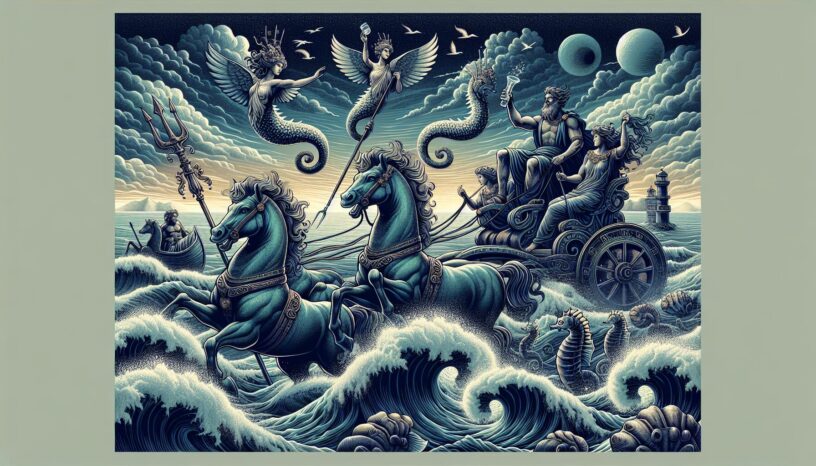
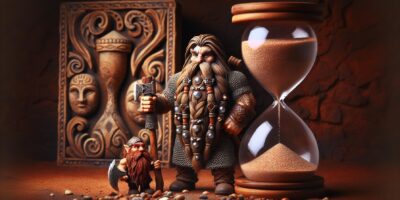
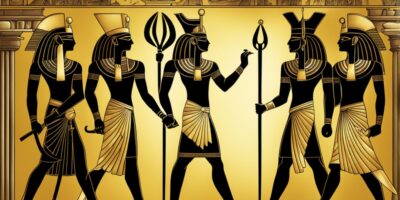
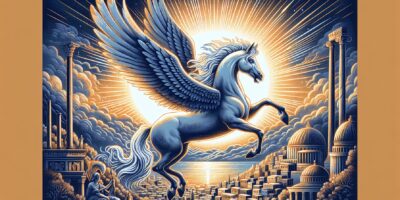
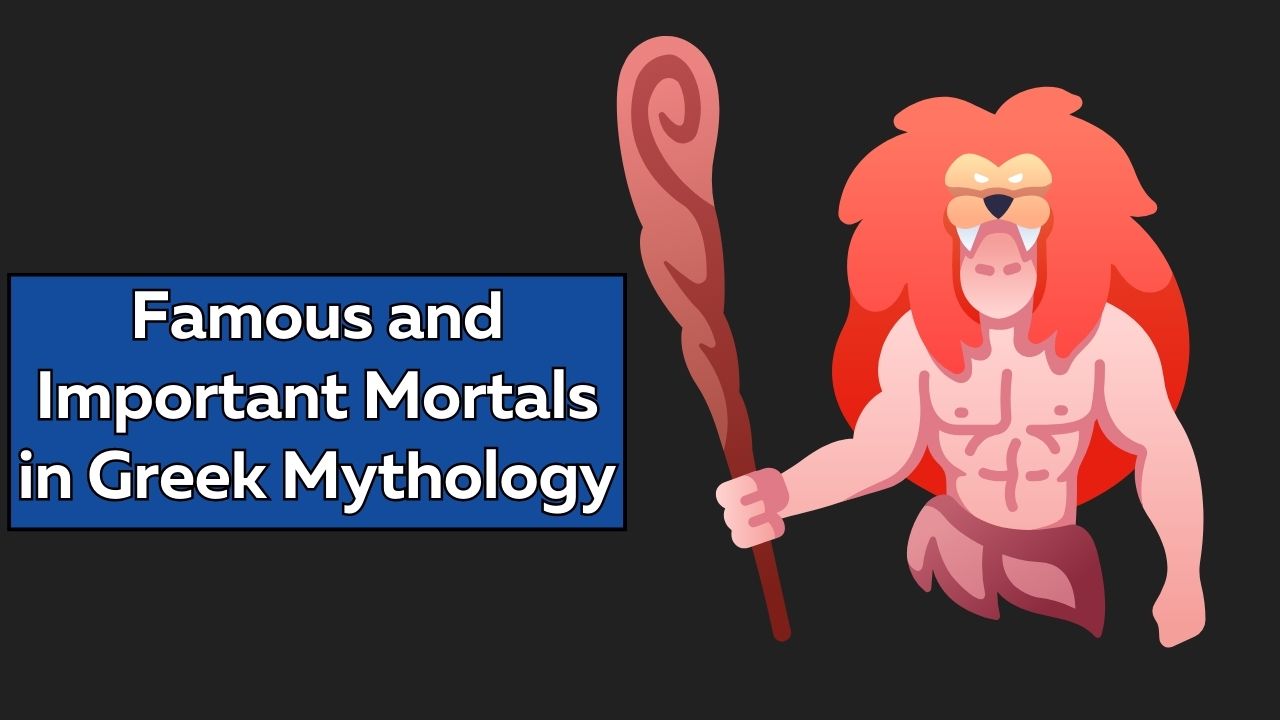

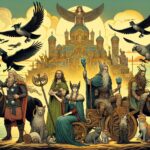
Leave a Reply